Results 1 to 10 of 26
-
05-26-2008, 01:53 AM #1
 Calling all electric motor experts........
Calling all electric motor experts........
Wayne Goddard's "The $50 Knife Shop" book talks about old electric motors from clothes dryers working well as the basis for a homemade grinder. RPMs of that type of motor I understand are the lower 1750 which makes sense for grinding metal. I've heard that 2hp rather than 1hp is ideal for a grinder.
I got this motor that's never been used (it was a replacement motor for a wood jointer).
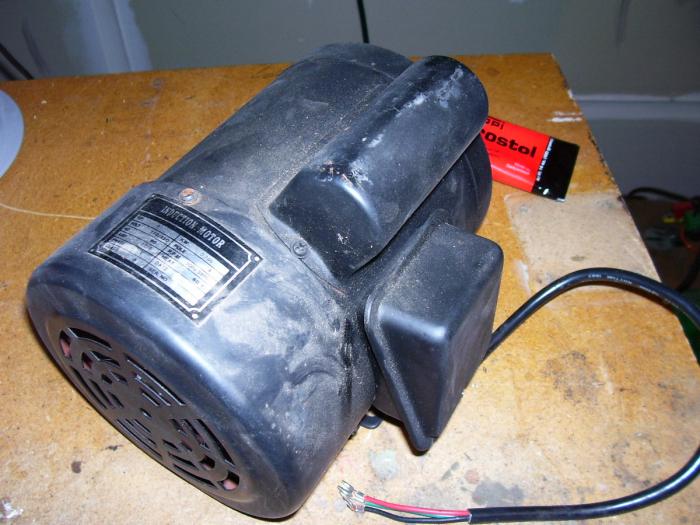

Other than being a higher RPM motor and only 1hp, is there any cost effective way for me to use this motor for building a 2"x72" grinder? It cost me nothing, so if it would be costly to retro or modify this motor to work well, no biggie.
As you can probably tell, I know next to nothing about electric motors.
Thanks!
Chris L"Blues fallin' down like hail." Robert Johnson
"Aw, Pretty Boy, can't you show me nuthin but surrender?" Patti Smith
-
05-26-2008, 02:11 AM #2Senior Member

- Join Date
- Oct 2007
- Posts
- 1,292
Thanked: 150
All you'd need is a few pulleys, pieces of steel tubing, contact wheels, nuts/bolts and a bunch of time.
I've thought about building one for about a year and a half, maybe we can have a "build off" (but I need to collect parts first).
Sorry I can't tell you much about the motor.
-
05-26-2008, 02:24 AM #3

Thanks Russel. Build off.....sounds interesting. I've been reading a bunch on building one and would probably buy the $25 plans that are out there. I'd go for the no weld tube steel approach.
My whole thing is, not knowing anything about motors, the motor I have is a fast one, and I'm afraid would simply be too darn fast for grinding blades.
Chris L"Blues fallin' down like hail." Robert Johnson
"Aw, Pretty Boy, can't you show me nuthin but surrender?" Patti Smith
-
05-26-2008, 02:31 AM #4

Since the belts, from what little I know, are driven by pulleys, changing the pulley diameters changes the grinder speed, very much like chaning the best on a drill press.
Sorry I can't be more help than that - maybe JoshEarl et al. will chime in.
Good luck,
Mark
-
05-26-2008, 02:40 AM #5Senior Member

- Join Date
- Oct 2007
- Posts
- 1,292
Thanked: 150
Yeah, if you set up a pulley system to step down the speed a little, you'd also pick up some torque which would be a real plus, when you throw a piece of steel into the grit you don't want the motor to slow down much (inconsistent grinds).
Kinda kidding about the build off, but I do need to get a belt grinder. Depends on whether I can scrounge up a suitable motor and stuff, but I think it'd be good to compare notes if we both end up making one.Last edited by Russel Baldridge; 05-26-2008 at 02:43 AM.
-
05-26-2008, 03:17 AM #6

The speed seems a bit fast, but as others have stated that can be adjusted through pulley size.My question is, 'what kind of shaft do you have'. You not only need to consider the motor size and speed, but how do you apply that force to the workpiece.
BTW, Motors are precharged with smoke from the factory. If this motor smokes, you have let out all of the useful carbons. Make sure you wire it properly.
Jerry
-
05-26-2008, 03:31 AM #7

It's got a shaft that measures 5/8ths (not including the extra key like extension at the end) and is 2" long.
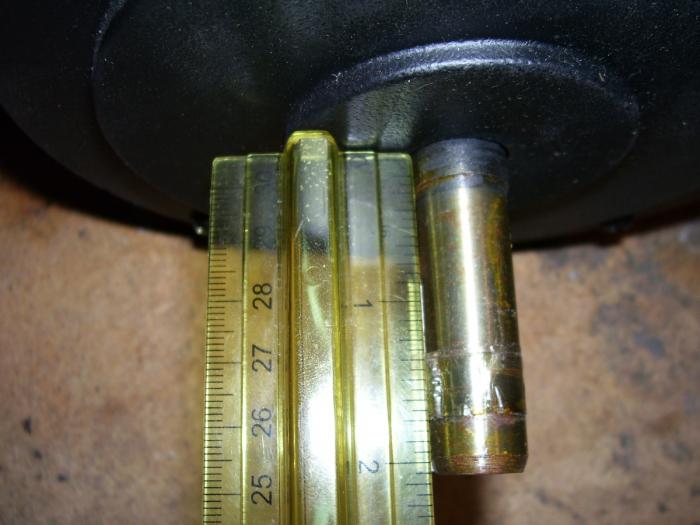
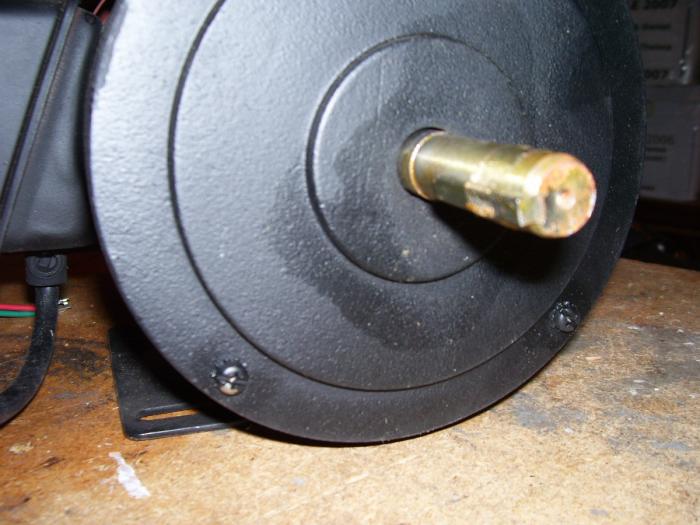
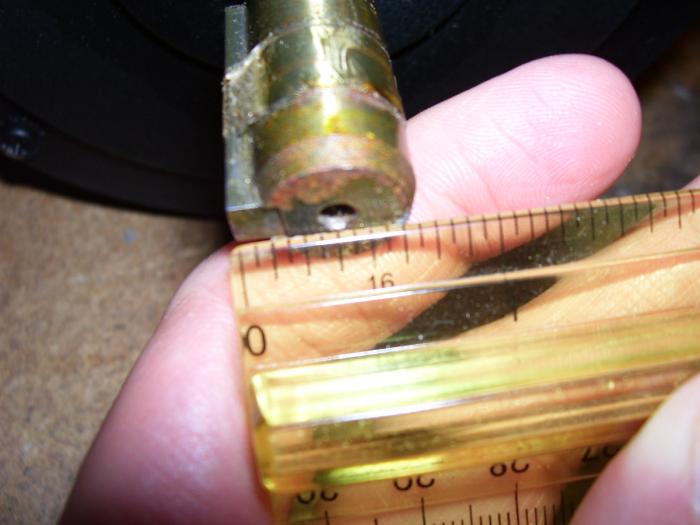
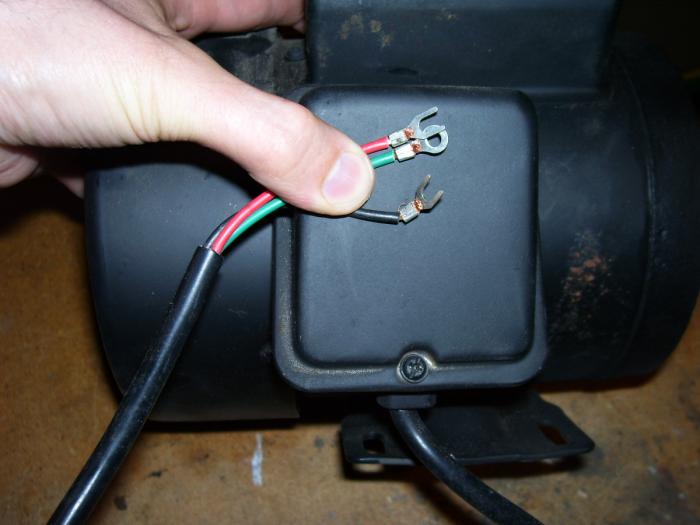
Chris L"Blues fallin' down like hail." Robert Johnson
"Aw, Pretty Boy, can't you show me nuthin but surrender?" Patti Smith
-
05-26-2008, 05:27 AM #8

Looks like the motor can use 110 or 220 volt AC. It’s probably wired for 110 but check the machine it was to replace because it could be wired for 220 if the wood joiner was once in a workshop… some shops use 220V for all the machines.
In that square box (with the little screw) should have wiring diagram or you will see the electrical connections indicating the wiring voltage… not much of a problem if its wired for 220 and you plug into 110 (power output will be very low) but the other way around will produce the “smoke”.
It should be easy to find a pulley with 5/8th bore and (It looks like a 3/16 inch) keyway for it. For better toque (lowest RPM) you would get the smallest diameter pulley available.
-
05-26-2008, 02:24 PM #9

Definitely find out if it's 220v or 110v. Running a 220v motor is more efficient, but you'll need a special outlet for it in your shop.
My grinder is running with a 1 hp, 110v motor at 1750 rpm. The 2 hp thing is good; the 3450 thing is less than ideal but you can make it work. The top speed on my grinder is 3500 surface feet per minute, which is what you'll get as a base speed if you don't try to slow it down some. That's a great speed for most grinding on steel, and I do about 90 percent of my work at this speed. You will destroy quite a few blades while you're getting the hang of it, though.
Using a step-down pulley, you can drop the speed to 1750 sfpm, or possibly even lower. The pulleys work off simple ratios. If your drive pulley is twice as big as the pulley that moves the belt, you'll double your speed. (I think you also halve your torque, but I do just fine with my 1 hp motor.) I have two step-down pulleys that work in tandem. One is on the motor's arbor, and the other is connected to to a shaft that moves the wheel that moves the belt.
The main thing you need the slower speeds for is working on scales. I sometimes wish my grinder could drop down to the 300 sfpm range for delicate work. But I haven't decided to drop $800 on a variable speed motor and control system, so I make do.
Visit www.usaknifemakers.com. Tracy has some of the best prices around, and he's extremely helpful. He stocks most of the materials you'd need to make a really nice belt grinder.
Josh
-
05-26-2008, 02:26 PM #10

BTW, I'm moving this to The Forge, just because it seems appropriate and I like to keep things organized.

Josh


 LinkBack URL
LinkBack URL About LinkBacks
About LinkBacks







 Reply With Quote
Reply With Quote
